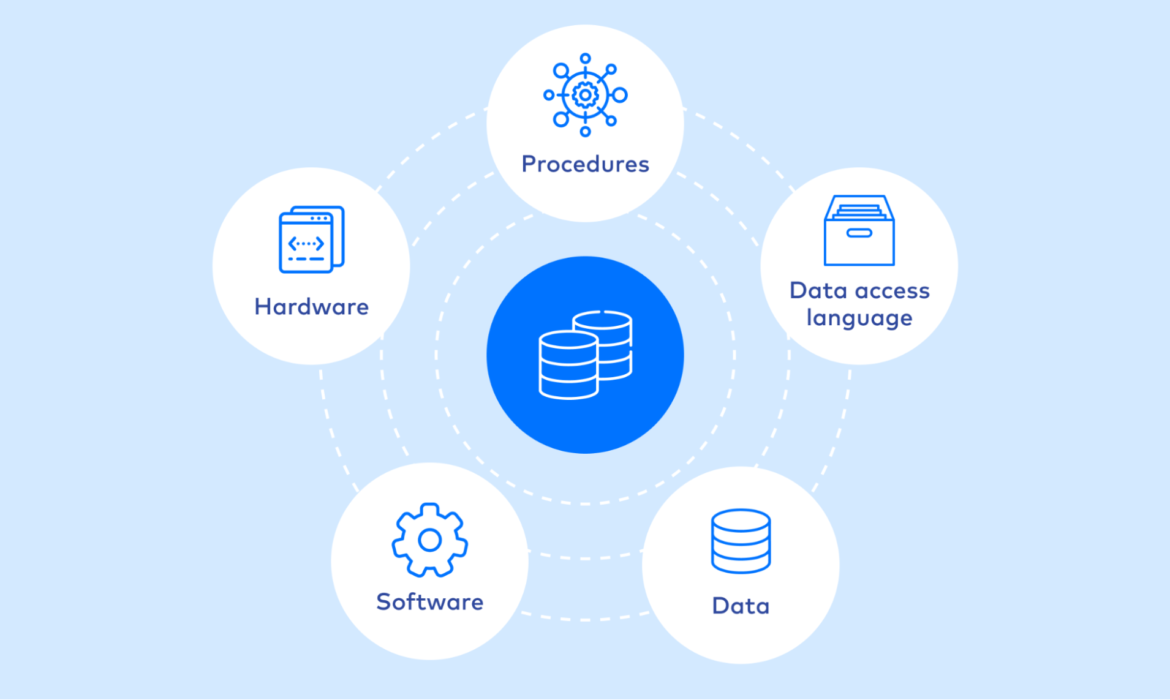Enhanced Cybersecurity Measures
As cyber threats continue to evolve, web developers must prioritize security to protect user data and maintain trust. In 2025, cybersecurity is no longer just an IT concern—it’s a fundamental part of web development. With increasing incidents of data breaches, ransomware attacks, and phishing schemes, developers are implementing stronger defenses. Here’s a deeper look at how cybersecurity is shaping the future of web development:
Zero-Trust Architecture
Gone are the days of trusting users simply because they are inside an organization’s network. The zero-trust model requires strict verification for every user, device, and application, minimizing the risk of unauthorized access. By adopting this principle, web developers ensure that only authenticated and authorized users interact with sensitive data.
Bio-metric Authentication
Passwords alone are no longer sufficient. Modern web applications are integrating bio-metric authentication methods such as facial recognition, fingerprint scans, and voice identification to bolster security. This approach improves user experience while significantly reducing the likelihood of unauthorized access.
AI-Powered Threat Detection
Artificial intelligence is playing a crucial role in cybersecurity. Advanced AI-driven algorithms analyze user behavior, detect anomalies, and predict potential threats before they escalate. By leveraging AI-based security systems, developers can automate threat detection and response, reducing vulnerabilities in web applications.
End-to-End Encryption
With privacy concerns rising, encryption is now a standard feature in web development. End-to-end encryption ensures that data remains secure during transmission, preventing unauthorized interception. Whether it’s messaging apps, e-commerce platforms, or financial services, encrypting user data is essential for maintaining confidentiality.
Secure APIs
APIs are integral to modern web applications, enabling seamless communication between different systems. However, improperly secured APIs are a major target for cyber criminals. Developers are focusing on implementing secure authentication mechanisms, rate limiting, and regular vulnerability assessments to safeguard APIs from exploitation.

Multi-Factor Authentication (MFA)
A single password isn’t enough to keep cyber threats at bay. MFA requires users to verify their identity using multiple factors—such as a password, a mobile device confirmation, or a one-time security code. This added layer of security minimizes the risk of unauthorized account access.
Threat Intelligence & Ethical Hacking
Web developers are taking proactive measures by studying threat intelligence reports and conducting ethical hacking exercises. Penetration testing helps identify security flaws before they can be exploited by malicious actors. Staying ahead of attackers requires constant learning and adaptation.
Data Privacy & Compliance
Governments and organizations are tightening regulations on data privacy. Developers must comply with laws such as GDPR, CCPA, and other emerging privacy policies to ensure ethical data handling. Implementing transparency measures and giving users control over their personal data fosters trust and legal compliance.
Security-First Development Approach
Security can no longer be an afterthought. Developers are embedding security practices within the development lifecycle, known as DevSecOps (Development, Security, and Operations). By integrating security from the initial design stage, vulnerabilities can be identified early, making web applications more resilient to cyber threats.
Cybersecurity is a dynamic field, and web developers must continuously evolve their strategies to keep up with emerging threats. Implementing these enhanced security measures ensures safer digital experiences for users and businesses alike.
The Influence of Social Media in Today’s Digital Age
The Influence of Social Media in Today’s Digital Age: More Than Just Connection
Social media has become an integral part of modern life, shaping how we communicate, interact, and consume information. Whether used for entertainment, business, news, or activism, its impact is undeniable. But beyond its obvious role in digital connectivity, social media has transformed industries, influenced behaviors, and created new opportunities for engagement.
The Rise of Social Media: A Digital Revolution
Over the past two decades, social media platforms like Facebook, Twitter, Instagram, TikTok, and LinkedIn have revolutionized the way people share ideas, connect with brands, and express themselves. Originally designed for personal networking, these platforms have evolved into powerful tools that influence economies, shape political movements, and drive cultural shifts.
How Has Social Media Changed the Way We Interact?
- Instant Communication – Gone are the days of waiting for emails or phone calls. Social media enables real-time communication across borders, making interactions faster and more accessible.
- Global Connectivity – People can now engage with others from different parts of the world, fostering international relationships, cultural exchanges, and global discussions.
- Personal Branding – Individuals have the ability to create a digital identity, influencing how they are perceived by employers, peers, and followers.

Social Media as a Marketing Powerhouse
For businesses, social media is no longer optional—it’s essential. Companies use these platforms to reach audiences, build brand awareness, and drive sales. Some major advantages of social media marketing include:
- Cost-Effective Advertising: Social media provides affordable marketing compared to traditional media like television or print ads.
- Targeted Campaigns: AI-driven advertising helps brands reach specific demographics based on interests, location, and online behavior.
- Engagement & Community Building: Businesses can interact directly with customers, responding to feedback and fostering loyalty.
- Influencer Marketing: Collaborations with influencers help brands reach larger audiences and build credibility.
The Rise of Influencer Culture: Digital Celebrities and Their Impact
Social media has given birth to a new category of public figures: influencers. These individuals gain significant online followings and shape consumer opinions on fashion, fitness, technology, and more. Their content often drives purchasing decisions, making them valuable partners for businesses seeking visibility.
However, influencer culture also comes with challenges. While authentic endorsements can be powerful, misleading promotions, unrealistic beauty standards, and excessive commercialization can negatively affect audiences. As social media continues to evolve, transparency and authenticity are becoming increasingly important in influencer marketing.

The Dual Impact on Mental Health
While social media offers entertainment, connection, and opportunities, it also presents challenges for mental health. Studies have shown that excessive screen time and online comparisons can lead to anxiety, depression, and reduced self-esteem. Some common mental health concerns linked to social media include:
- Social Comparison: Users may feel pressured to match the curated, often unrealistic lifestyles portrayed online.
- Cyberbullying: Online harassment remains a serious issue, affecting individuals of all ages.
- Digital Addiction: The need for constant scrolling, notifications, and engagement can become overwhelming.
Despite these concerns, social media also provides positive mental health benefits, such as support communities, self-expression, and educational resources. The key to maintaining a healthy relationship with social media is moderation and mindful consumption.
Social Media & Activism: A Voice for Change
In recent years, social media has become a major platform for activism, advocacy, and social movements. Whether it’s raising awareness about climate change, fighting injustices, or supporting charitable causes, social media gives voices to individuals and communities pushing for change.
Some key ways social media fuels activism include:
- Hashtag Movements: Viral hashtags help spread awareness and unite people around causes.
- Fundraising & Crowdfunding: Platforms like GoFundMe allow individuals to raise money for various social initiatives.
- Mobilization: Social media facilitates protests, petitions, and large-scale discussions that influence policies.
The Future of Social Media: Trends to Watch
As technology advances, the landscape of social media will continue to evolve. Some key trends shaping the future include:
- Augmented & Virtual Reality (AR/VR): Social media platforms are exploring immersive experiences that go beyond traditional engagement.
- AI-Powered Content: Artificial intelligence is shaping recommendations, personalized feeds, and chatbot interactions.
- Blockchain & Data Privacy: With growing concerns about user data, blockchain may revolutionize secure transactions and decentralized social platforms.
- Live & Real-Time Experiences: The demand for authentic, real-time content is growing, pushing platforms to focus on live streaming, behind-the-scenes updates, and instant engagement.

Conclusion: The Role of Social Media in a Digital Society
Social media is more than just a platform—it’s a cultural phenomenon influencing communication, business, entertainment, and activism. As its influence continues to grow, the focus should shift toward responsible usage, digital literacy, and maintaining a balance between online and offline life.
Whether you’re a business owner, a digital creator, or a casual user, understanding the power of social media is key to navigating its dynamic landscape. Social media is constantly evolving, and its impact on society is far-reaching. The question is: how will you use it?
The Power of Digital Transformation in Business Growth
In today’s ever-changing business landscape, the ability to adapt and embrace technological advancements has become essential for success. Digital transformation is not just a trend—it’s a fundamental shift in how businesses operate, interact with customers, and remain competitive. Companies that leverage digital tools effectively can improve efficiency, increase profitability, and create seamless customer experiences that set them apart.
Understanding Digital Transformation
Digital transformation refers to the integration of digital technologies into all areas of a business, fundamentally changing how it operates and delivers value to customers. It involves modernizing existing processes, automating manual tasks, utilizing data for strategic decision-making, and creating a more connected business ecosystem.
Some of the key elements of digital transformation include:
- Cloud Computing: Shifting operations to cloud-based platforms enhances flexibility, scalability, and data security.
- Artificial Intelligence & Automation: AI-driven tools automate repetitive tasks, freeing up time for innovation.
- Big Data & Analytics: Advanced data analytics provide valuable insights for smarter business decisions.
- Enhanced Cybersecurity: As businesses become more digital, ensuring data protection is a top priority.
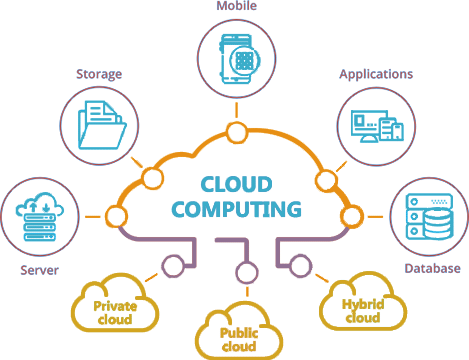
Why Digital Transformation Is Crucial for Businesses
Companies that fail to evolve risk losing relevance in a highly competitive market. Here are the major benefits of digital transformation:
- Improved Efficiency – Automating workflows and business operations minimizes errors and boosts productivity.
- Enhanced Customer Experience – Personalized digital interactions create stronger relationships with customers.
- Cost Savings – Streamlining processes and reducing manual work cuts operational expenses.
- Agility & Innovation – Businesses that embrace digital solutions can quickly adapt to market trends.
- Data-Driven Decisions – Access to real-time data leads to smarter and more informed strategies.
Key Trends Driving Digital Transformation
Technology continues to evolve, and businesses must stay ahead of emerging trends to remain competitive. Some of the most impactful digital trends shaping industries today include:
- AI & Machine Learning – AI enhances data processing, customer service, and operational efficiency.
- Internet of Things (IoT) – Smart connected devices improve monitoring, automation, and decision-making.
- Blockchain Technology – Offers increased security and transparency in transactions and digital records.
- Remote Work & Collaboration Tools – Cloud-based solutions make it easier to work from anywhere in the world.
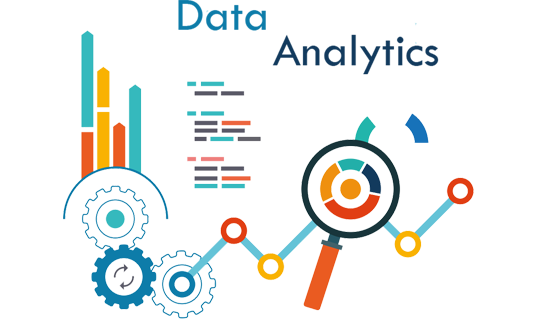
Overcoming Digital Transformation Challenges
While the benefits of digital transformation are undeniable, businesses may face challenges when implementing new technologies. Some common obstacles include:
- Resistance to Change: Employees may hesitate to adopt new processes, requiring effective training and engagement.
- Initial Investment Costs: While digital solutions can lead to long-term savings, the upfront costs may be a concern.
- Data Security Risks: As businesses move online, cybersecurity measures must be strengthened to prevent data breaches.
- Integration with Existing Systems: Legacy systems may require upgrades to seamlessly work with modern digital tools.
Conclusion
Digital transformation is not a one-time event—it’s a continuous journey that requires innovation, adaptability, and commitment. Businesses that embrace technological advancements gain a competitive edge by improving efficiency, customer satisfaction, and market reach.
In an increasingly connected world, the future belongs to companies that leverage digital solutions to maximize their potential. Whether through AI, cloud computing, or automation, businesses must invest in digital growth to stay relevant and future-proof their operations.

The Power of Payment Gateways in Websites: Seamless Transactions for Businesses
In today’s digital world, where convenience and efficiency are paramount, having a reliable payment gateway integrated into a website is no longer a luxury—it’s a necessity. Whether you’re running an e-commerce store, a subscription-based service, or a donation platform, the ability to accept online payments securely and seamlessly can determine the success of your business.
What is a Payment Gateway?
A payment gateway is the technological infrastructure that facilitates online transactions. It acts as a bridge between a customer and the merchant’s financial institution, ensuring that payments are processed securely. Think of it as the digital equivalent of a point-of-sale system in a physical store. When customers enter their payment details, the gateway encrypts this information, validates the transaction, and ensures funds are transferred from the customer’s account to the merchant’s.
Why Your Website Needs a Payment Gateway
The rise of online shopping, digital subscriptions, and virtual services has made integrated payment gateways a critical component for any business. Here’s why they matter:
1. Convenience for Customers
A smooth payment experience directly impacts customer satisfaction. With a payment gateway, users can complete transactions within seconds, without hassle. Multiple payment options, such as credit/debit cards, digital wallets, and direct bank transfers, allow customers to pay in their preferred way, making their experience seamless.
2. Security and Fraud Prevention
Cybersecurity threats are an ever-present concern in digital transactions. Payment gateways provide encryption protocols and compliance with standards such as PCI-DSS (Payment Card Industry Data Security Standard) to safeguard sensitive financial data. They also integrate fraud detection tools that help merchants minimize unauthorized transactions, charge-backs, and security breaches.
3. Global Reach and Expansion
For businesses looking to scale internationally, payment gateways allow transactions in multiple currencies and facilitate cross-border payments. With features like currency conversion and multilingual interfaces, businesses can cater to global customers without barriers.
4. Automated Payment Processing
Gone are the days of manually tracking payments. Payment gateways automate the process, ensuring real-time transaction approvals and confirmations. This efficiency helps businesses manage cash flow effectively while reducing administrative workload.
5. Subscription and Recurring Payments
For businesses offering subscription-based services—like SaaS platforms, streaming services, or membership-based models—payment gateways enable recurring payments. Customers can set up automatic billing, ensuring uninterrupted service and reducing the chances of payment lapses.
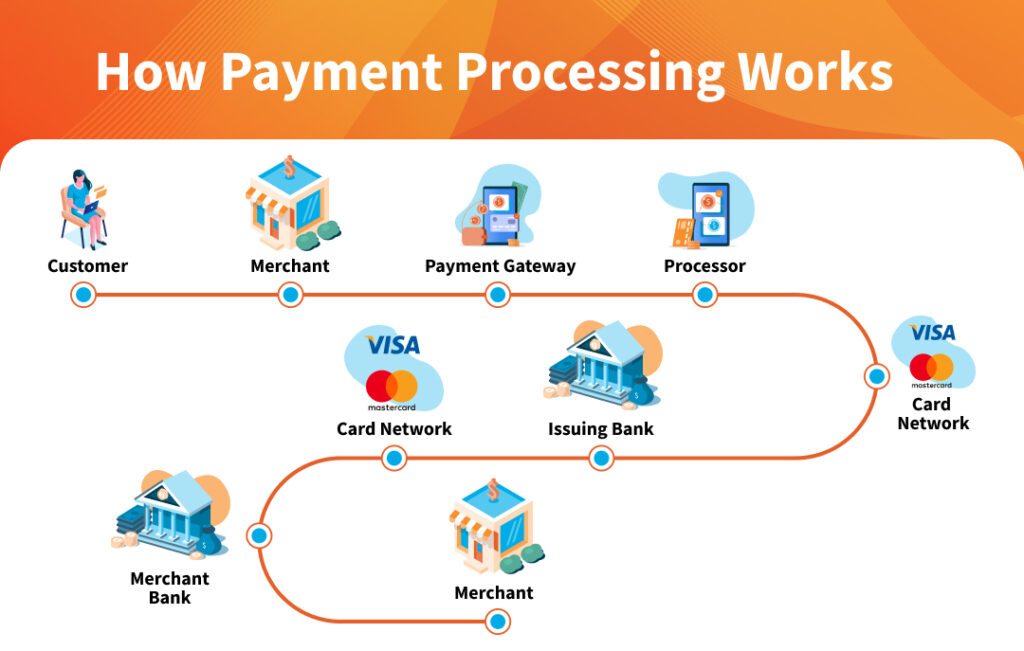
Choosing the Right Payment Gateway
With several payment gateways available in the market, selecting the right one for your website can be overwhelming. Here are key factors to consider:
1. Compatibility with Your Business Model
Not all gateways support every type of business. Some specialize in e-commerce, while others cater to digital services or donations. Choose a gateway that aligns with your industry needs.
2. Transaction Fees and Costs
Different payment providers have varying fee structures, including transaction fees, setup fees, and monthly charges. Compare costs to find a solution that fits your budget while offering top-notch security and efficiency.
3. Security Features
Look for gateways that offer advanced fraud detection, data encryption, and compliance with industry security standards. The safer your payment processing, the more trustworthy your business becomes.
4. Integration and User Experience
A payment gateway should seamlessly integrate with your website and offer a user-friendly checkout experience. Features like one-click payments, saved payment details, and mobile optimization significantly improve customer experience.
5. Customer Support and Reliability
Technical issues can disrupt transactions and impact revenue. Choose a provider with responsive customer support and a proven track record of uptime and reliability.
Popular Payment Gateways for Websites
Several payment gateways dominate the industry, offering unique features tailored to different business needs. Some of the most popular ones include:
- PayPal: Widely recognized and trusted, PayPal offers seamless transactions and supports global payments.
- Stripe: Known for its developer-friendly integration, Stripe provides highly customizable payment solutions.
- Square: Great for small businesses, Square integrates both online and offline payments effortlessly.
- Authorize.Net: A secure gateway with advanced fraud protection and subscription billing features.
- Razorpay: Ideal for businesses in India, offering diverse payment methods and automation tools.
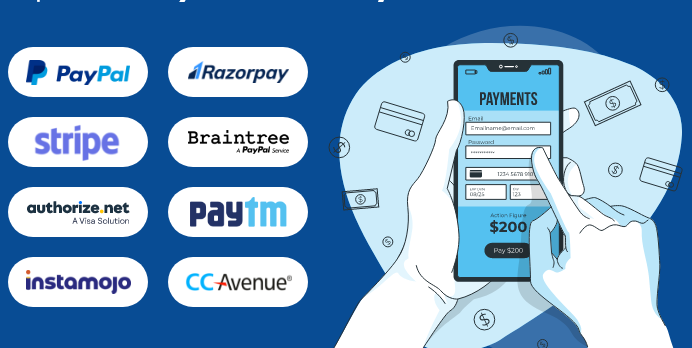
Final Thoughts
A well-integrated payment gateway is more than just a transaction tool—it’s a gateway to business growth, customer satisfaction, and financial security. Whether you’re launching a new website or looking to optimize an existing one, ensuring that your payment system is reliable, secure, and user-friendly will enhance your credibility and drive sales.
As digital transactions continue to evolve, businesses that prioritize seamless payment experiences will remain ahead of the competition. Are you ready to power up your website with the right payment gateway?
Let’s talk—what challenges have you faced with online payments, and which gateway solution are you considering? 🚀
How Tech is Revolutionizing Business
In today’s fast-paced world, technology isn’t just an add-on—it’s the very fabric that holds modern businesses together. From startups hustling in a co-working space to established enterprises reinventing their processes, tech has reshaped how we operate, innovate, and connect with our customers.
A Digital Backbone for Operational Efficiency
Imagine running your business with systems that work around the clock, eliminating human error and streamlining processes. Whether it’s automating administrative tasks, managing finances with real-time data, or harnessing cloud computing for seamless collaboration, technology provides the backbone of operational efficiency. Businesses can now analyze extensive datasets to optimize inventory, predict trends, and deliver a smoother customer experience. This digital transformation means that resources are used more effectively, allowing companies to focus on what truly matters—growing and innovating.
Driving Innovation and Market Adaptability
Tech isn’t just about making old processes faster; it propels innovation. With artificial intelligence, machine learning, and big data analytics at the forefront, businesses are uncovering insights that drive product development and market strategy. Companies can tailor marketing campaigns to accurately target their audiences through personalized messaging, which translates to higher engagement and customer retention. As markets become increasingly competitive, the ability to pivot quickly, test new ideas, and implement creative solutions has proven to be a vital competitive advantage.

Enhancing Customer Engagement and Experience
The modern consumer expects more than just a product—they demand an experience that’s interactive, responsive, and tailored to their individual needs. Technology bridges the gap between businesses and their customers through digital platforms, social media, and mobile applications. By leveraging these tools, companies can build lasting relationships, gather actionable feedback, and continuously improve their service. Whether it’s through chat-bots providing instant customer service or augmented reality showing off products in a new light, tech is continuously enhancing the customer journey.
Embracing Remote Work and Global Connectivity
The recent surge in remote work has shown that geographical limitations are no longer barriers to efficiency. Collaboration tools such as video conferencing, shared work-spaces, and project management platforms have transformed teams into global communities. This connectivity not only boosts productivity but also opens the door to a diverse talent pool. Embracing a digital-first approach allows companies to remain agile, ensuring they can respond to market shifts rapidly and with thoughtful precision.
Taking the Leap Forward
For any business owner or aspiring entrepreneur, the message is clear: tech is not the future of business—it’s the now. Embracing technological innovations can seem daunting, but each step taken is an investment in long-term growth and relevance. As new developments continue to emerge, the willingness to adapt, learn, and integrate these tools into daily operations will define success in a highly dynamic marketplace.
As we stand at the crossroads of tradition and modernity, consider the role technology plays in your own business journey. What challenges can you overcome with the right digital tools? How might innovative tech solutions unlock new opportunities for growth and customer engagement?
The digital revolution is here—are you ready to harness its power?
Let’s continue this exploration. What tech innovations have transformed your work, and what future advancements are you most excited about?
Securing Your Database: Advanced Strategies for Data Protection
Databases are the lifeblood of modern applications, holding everything from user data to sensitive business information. In a world where cyber threats evolve by the minute, protecting this invaluable asset is not optional—it’s essential. This post (Blog Post 4 in our series on data security) delves into advanced techniques and best practices to secure your database from potential breaches, ensuring your digital fortress remains impervious.
1. Understanding the Threat Landscape
Before diving into solutions, it’s critical to acknowledge the dynamic nature of database threats. Cyber attackers exploit vulnerabilities such as SQL injection, misconfiguration, and insufficient access controls. As your organization grows, so does the complexity of your data environment, and with it, the potential for security gaps. Recognizing these threats is the first step toward building a robust defense strategy.
2. Core Database Security Principles
Effective database security is built on a foundation of multiple layers working in tandem. Here are the key principles that should shape your security strategy:
- Defense in Depth: Layer your security measures so that if one barrier is breached, others remain intact.
- Least Privilege: Grant users and applications only the permissions they truly need.
- Regular Auditing and Monitoring: Keep an eye on your database activities to quickly identify and respond to anomalies.
- Data Encryption: Protect your data both in transit and at rest to ensure that, even if intercepted, it remains unintelligible.
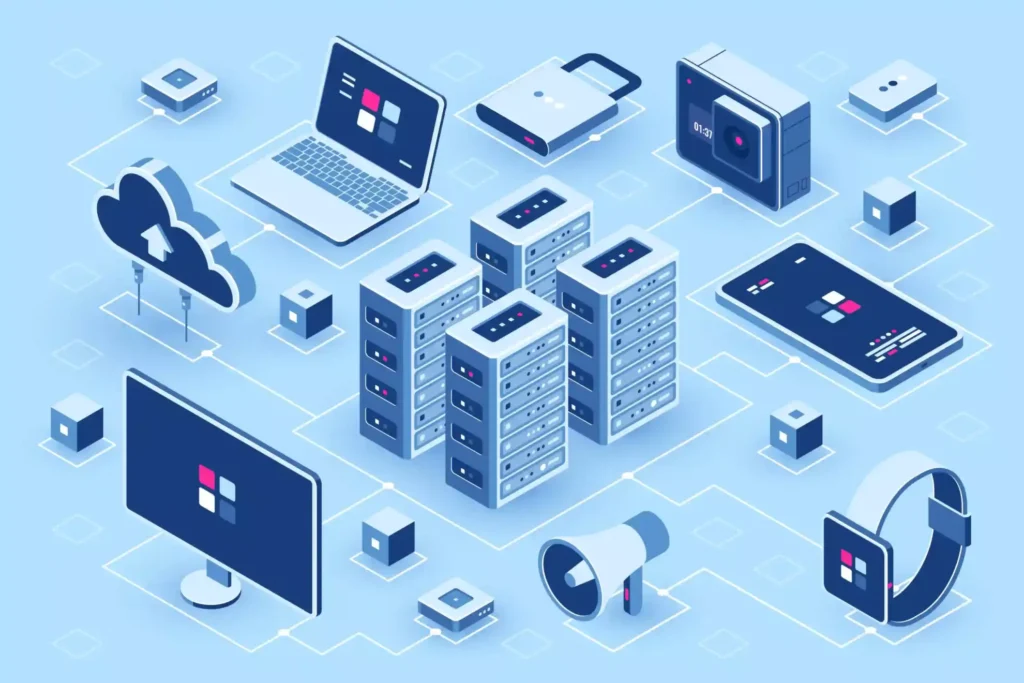
3. Best Practices for Securing Your Database
A. Reinforce Access Controls
- Role-Based Access Control (RBAC): Implement a well-defined system of roles, ensuring that each user obtains only the privileges necessary for their job.
- Authentication Strength: Enhance user authentication with multi-factor authentication (MFA) to add an extra layer of defense.
- Regular Access Reviews: Conduct periodic audits to ensure that permissions remain aligned with current roles and responsibilities.
B. Secure Data with Encryption
- At-Rest Encryption: Use robust encryption algorithms to secure stored data. This ensures that if the physical storage is compromised, the data remains protected.
- In-Transit Encryption: Always use SSL/TLS protocols for data moving between clients and servers to safeguard against interception.
- Data Masking & Tokenization: When presenting data in non-sensitive contexts (like testing or analytics), substitute sensitive data with non-reversible anonymized versions.
C. Patch Management and Vulnerability Assessments
- Regular Updates: Stay current with patches for your database management systems (DBMS). Software vendors frequently release security updates addressing newly discovered vulnerabilities.
- Automated Vulnerability Scanning: Utilize security tools that continuously check for weaknesses so you can address them before they’re exploited.
- Penetration Testing: Periodically simulate attacks to assess the practical security of your database environment.
D. Network-Level Safeguards
- Segmentation: Isolate your database servers from other parts of your network. This minimizes damage if a breach occurs in another segment.
- Firewalls and Intrusion Detection Systems (IDS): Integrate firewalls and IDS to filter out malicious traffic and alert you to suspicious activity.
- Zero Trust Architecture: Adopt a “never trust, always verify” stance that treats every connection attempt as potentially hostile.
E. Backup and Recovery Planning
- Regular Backups: Establish a schedule for comprehensive backups and ensure that these backups are themselves secured (encrypted and access-controlled).
- Disaster Recovery Testing: Regularly test your recovery procedures to ensure data can be restored quickly and accurately after an incident.
Below is a concise table summarizing these best practices:
| Practice | Description |
|---|---|
| Access Controls | Implement RBAC, MFA, and routine reviews to ensure minimal permissions are enforced. |
| Encryption | Use encryption for data both at rest and in transit, along with data masking techniques. |
| Patch Management | Keep your DBMS updated and conduct vulnerability scans and penetration testing regularly. |
| Network Security | Segment networks, configure firewalls, use IDS, and consider a zero trust approach. |
| Backup & Recovery | Ensure regular backups are securely stored and recovery plans are routinely tested. |
4. Advanced Techniques and Emerging Trends
As cyber threats become increasingly sophisticated, so too must your defenses. Here are some forward-thinking strategies to stay ahead:
Leveraging Artificial Intelligence
- Anomaly Detection: AI-driven monitoring solutions can detect unusual patterns in real time, alerting you to potential breaches before they cause damage.
- Predictive Analytics: Use machine learning to predict potential vulnerabilities based on past incidents and usage trends.
Database Activity Monitoring (DAM)
- Real-Time Alerts: Utilize DAM tools to provide constant oversight of all database activities. Such tools can pinpoint insider threats or irregular access patterns.
- Behavioral Analytics: Establish a baseline of normal activity and flag deviations that might indicate malicious intent.
Embracing the Cloud Securely
- Cloud Providers’ Security Tools: If using cloud-hosted databases, leverage the robust security features offered by providers like AWS, Azure, or Google Cloud.
- Hybrid Security Models: Integrate traditional on-premises security measures with cloud-native tools to ensure comprehensive protection in a hybrid environment.
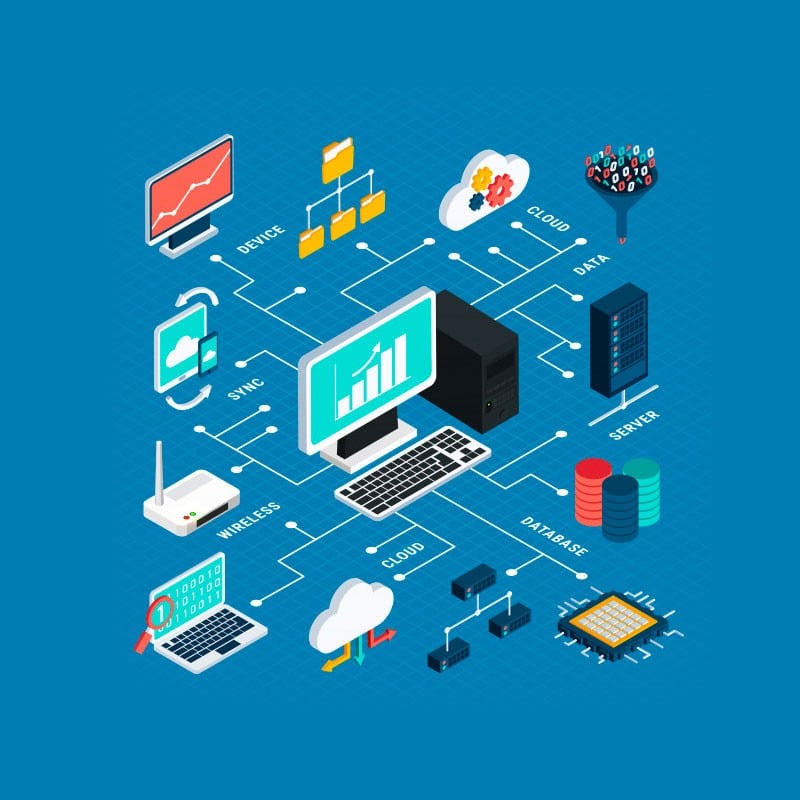
5. Conclusion and Next Steps
Securing your database is not a one-off task—it’s an ongoing process that requires vigilance, continual learning, and adaptation. By incorporating multi-layered security strategies, from strong access controls and encryption to proactive monitoring and embracing new technologies like AI for anomaly detection, you build a formidable line of defense against data breaches. Remember, every component in your security ecosystem—from patches and updates to employee training—plays a critical role in mitigating risks.
What’s Next?
- Deep Dive into Zero Trust: Explore how a zero trust security model can revolutionize your approach to database protection.
- Focus on Compliance: Understand the regulatory landscape (e.g., GDPR, HIPAA) and how these affect your database security policies.
- Invest in Continuous Learning: Keep up with emerging threats and innovative defensive tools by joining cybersecurity communities, webinars, and workshops.
Your data deserves a fortress—not a series of unprotected rooms. By adopting these advanced security measures, you’re not just keeping intruders at bay; you’re instilling trust, ensuring business continuity, and safeguarding the future of your digital assets.
Let’s keep the conversation going. How do you integrate these techniques into your database security strategy? Are you experimenting with AI-driven solutions or perhaps transitioning to a cloud-first security mindset? Share your experiences, and let’s pioneer a safer digital landscape together.
Unlocking the Power of APIs: Transforming Your Website into a Digital Marvel
Unlocking the Power of APIs: Transforming Your Website into a Digital Marvel
In the fast-evolving world of technology, websites are no longer static pages of information—they are dynamic ecosystems that interact, engage, and deliver value to users. At the heart of these transformations lies the humble yet powerful API (Application Programming Interface). APIs have revolutionized web development by enabling seamless connectivity and functionality that would otherwise require tremendous effort to build from scratch. For business owners and developers alike, embracing APIs is a critical step toward creating a website that truly stands out.
What Are APIs, and Why Should You Care?
Imagine APIs as the translators in the digital universe—they enable two systems to communicate effortlessly, even if they speak entirely different “languages.” Whether you want to fetch real-time weather data, integrate payment gateways, or showcase live social media feeds, APIs are the behind-the-scenes heroes that make it happen.
But why do APIs matter so much in web development? Simply put, they are the backbone of modern websites. APIs allow you to:
- Enhance the functionality of your site without the need for extensive coding.
- Access external services and data to provide users with richer experiences.
- Automate workflows and streamline processes, saving time and resources.
- Scale your website as your business grows, integrating new tools and services effortlessly.
The Business Case for APIs
For entrepreneurs and business owners, understanding APIs is not just a technical endeavor—it’s a strategic advantage. Here’s how APIs can transform your business website:
- Stay Competitive
In today’s digital landscape, customers expect websites to offer convenience, personalization, and interactivity. Without APIs, delivering on these expectations becomes nearly impossible. APIs empower you to meet and exceed customer demands, keeping you ahead of the competition. - Drive Efficiency
Every second saved in your operations is a second you can dedicate to growth. APIs automate repetitive tasks, enable real-time updates, and ensure that your website operates smoothly without requiring constant intervention. - Create Value for Customers
APIs allow you to offer features that enrich your users’ experience—whether it’s seamless online transactions, dynamic content, or personalized recommendations. Happy customers are loyal customers, and APIs are key to building that loyalty.
Exploring API Integration: Practical Examples
APIs aren’t abstract concepts—they’re practical tools that make amazing things possible. Here are real-world examples of how APIs can elevate your website:
- Social Media Integration
Embed live feeds from platforms like Instagram, Twitter, or Facebook to keep your content fresh and engaging. Social media APIs also enable easy sharing, helping your users amplify your reach. - E-Commerce Functionality
Payment APIs like Stripe and PayPal allow customers to make secure purchases directly on your site. Inventory management APIs keep your product availability updated in real-time. - Interactive Maps and Location Services
Use APIs like Google Maps to help users find your store, visualize data, or explore locations relevant to your business. - Communication Automation
SMS and email APIs, such as Twilio and SendGrid, simplify customer communication. From appointment reminders to order confirmations, automation enhances efficiency. - Content Personalization
APIs enable user-specific experiences, such as recommending products based on past behavior or displaying tailored content. - Data Visualization
APIs from analytics tools like Google Analytics help you present insights visually, empowering better decisions for both you and your audience.

How APIs Simplify Development
For developers, APIs are a dream come true—they take the heavy lifting out of creating advanced functionalities. Instead of building everything from scratch, developers can use APIs to “plug in” pre-built tools and services into a website. This not only saves time but also ensures that the features are reliable and tested.
Even for non-developers, APIs open up possibilities. Many APIs come with user-friendly documentation and guides, making it easier for you to understand how they work and implement them with minimal technical expertise.
How to Choose the Right APIs for Your Website
Not all APIs are created equal, so it’s important to select ones that align with your goals. Here’s how:
- Define Your Needs: What features do you want to add? Whether it’s payment gateways, live chats, or data analytics, clarity is key.
- Evaluate API Providers: Look for providers known for reliability, security, and scalability.
- Read the Documentation: A good API will come with comprehensive and easy-to-follow instructions.
- Test the API: Before full integration, test the API to ensure compatibility with your website.
Common Challenges and How to Overcome Them
While APIs offer incredible benefits, they can come with challenges such as:
- Dependency on Providers: If the API provider changes or discontinues their service, it can affect your website. Choose providers with solid reputations to mitigate this risk.
- Security Concerns: APIs, if not properly secured, can become vulnerable to attacks. Use encryption, authentication, and regular updates to protect your data and users.
- Performance Issues: Improper implementation of APIs can slow down your site. Work with a developer or closely follow documentation to optimize performance.
A Vision for the Future
The role of APIs is continuously evolving. In the near future, APIs are expected to power even more sophisticated functionalities, such as AI-driven personalization, blockchain integrations, and IoT connectivity. By embracing APIs now, you’re positioning your website to thrive in the ever-changing digital landscape.
Final Thoughts
Building a website is an exciting journey, and APIs are the tools that bring your vision to life. They transform static sites into dynamic platforms, turning ideas into reality with unparalleled efficiency. From e-commerce and communication to data insights and personalization, APIs unlock the true potential of your online presence.
So whether you’re launching your first website or upgrading an existing one, remember: APIs aren’t just technical add-ons—they’re your gateway to innovation, growth, and success.
Let your website tell a story, provide an experience, and leave a lasting impression. With APIs, the possibilities are endless—and your business is boundless.
Building a Website for Your Business: Your Gateway to Growth and Success
In the digital age, the question isn’t whether your business needs a website—it’s how you can build one that truly represents your brand and drives results. A website isn’t just a collection of pages; it’s your online storefront, your handshake with the world, and your ticket to limitless opportunities. Here’s why building a website for your business is one of the most empowering decisions you’ll ever make.
Why Your Business Needs a Website
Imagine you’re walking down a bustling street, looking for a coffee shop. The one with the inviting front door and clear signage grabs your attention first, right? A website does the same for your business in the online world—it’s the face of your brand and the magnet that draws people in.
A website establishes:
- Credibility: Consumers trust businesses with an online presence. It shows professionalism and signals that you’re serious about your work.
- Accessibility: You’re available 24/7, offering information, products, or services to customers whenever they need.
- Global Reach: Your business isn’t limited by geography. With a website, the world is your audience.
The Benefits of Building Your Own Website
Building a website isn’t just about ticking a box—it’s about creating a platform that grows alongside your business. Here are the transformative benefits of having a website:
- Be Found, Be Seen In an era where people turn to Google for every need, a website ensures you’re discoverable. Whether someone is searching for your services locally or internationally, your website is your key to being seen.
- Control Your Narrative Social media is powerful, but it’s fleeting. A website gives you control over your story—a place where you can showcase your brand, tell your journey, and connect directly with your audience.
- Empower Your Sales Strategy Think of your website as a tireless sales team. It provides detailed information about your offerings, encourages inquiries, and enables online transactions—all while you’re busy growing your business elsewhere.
- Harness Data Insights Your website doesn’t just serve your audience—it serves you too. Through analytics tools, you can learn what works, what doesn’t, and how to continuously evolve your strategy.
How to Build a Website That Stands Out
Creating a website might feel overwhelming, but it’s also exciting. Here’s how you can make it impactful:
- Know Your Purpose Start by defining what your website is for. Is it an online store, a portfolio, or an informational hub? Understanding your goals will guide your design and content choices.
- Design Matters Your website should be visually appealing and easy to navigate. Choose a clean layout, cohesive colors, and high-quality images. First impressions count!
- Content is King Write engaging copy that speaks to your audience. Focus on your unique selling points, answer common questions, and offer value through blogs, guides, or resources.
- Optimize for Mobile Did you know that most people browse websites on their phones? Ensure your site is mobile-friendly for a seamless experience.
- SEO for Visibility Search Engine Optimization (SEO) ensures that your website ranks well on search engines. Use relevant keywords, write meta descriptions, and optimize for fast loading speeds.
- Engage Through Social Media Integrate your social media channels to drive traffic and boost engagement. Your website and social platforms should complement each other.

Inspiration for Your Website
Building a website is your opportunity to dream big. It can be as simple or as complex as your business demands. Let it represent who you are—a visionary entrepreneur, a community builder, an innovator.
Imagine your homepage as a warm welcome, your blog as a conversation starter, and your product page as an open invitation to change someone’s life. The possibilities are endless, and every click brings your audience closer to your brand.
A Motivating Thought
Remember, creating a website isn’t just a technical endeavor—it’s an emotional investment in your business’s future. It’s the moment you decide to show the world what you’re made of. It’s the moment you say, “I believe in my dream enough to share it.”
Your website is a celebration of your hard work, vision, and ambition. With the right tools and mindset, you can build something remarkable—a digital home for your business that grows with you, evolves with the times, and connects you to the hearts of people everywhere.
The Importance of Branding in a Business: Building a Lasting Identity
In today’s competitive marketplace, branding is more than just a logo or a catchy tagline. It is the soul of a business, encompassing its values, mission, and the promise it makes to its customers. Effective branding can be the difference between a business that thrives and one that struggles to stand out. Here, we explore why branding is vital for any business and provide actionable insights on how to develop a strong and impactful brand.
1. Establishing Identity and Differentiation
Branding defines who you are as a business and how you want to be perceived by your audience. A strong brand helps you stand out from competitors by showcasing your unique value proposition. In a crowded market, where customers are bombarded with endless options, a distinctive brand makes it easier for them to choose you.
For example, consider iconic brands like Apple or Coca-Cola. Their consistent branding has carved out a niche for them, making them instantly recognizable and memorable. A well-crafted brand identity enables even small businesses to create a lasting impression.
Actionable Tip: Begin by defining your brand’s mission, vision, and core values. Understand what makes your business unique and craft a compelling brand message around it.
2. Building Trust and Credibility
A strong brand builds trust with customers. People are more likely to buy from a business they recognize and trust. Consistent branding across all touchpoints—be it your website, social media, or product packaging—signals professionalism and reliability.
Trust is especially critical for new businesses trying to establish themselves in the market. A cohesive and authentic brand identity reassures customers that your business is reputable and delivers on its promises.
Actionable Tip: Focus on delivering consistent, high-quality experiences that align with your brand values. Be transparent and authentic in all your communications to foster trust.

3. Creating Emotional Connection
Great brands evoke emotions and connect with their audience on a personal level. Customers don’t just buy products; they buy experiences and the feelings associated with a brand. Emotional branding helps create loyal customers who advocate for your business.
For example, Nike’s branding doesn’t just sell sportswear; it inspires people to “Just Do It,” aligning with their aspirations and desire for success. This emotional resonance keeps customers coming back.
Actionable Tip: Understand your target audience’s needs, desires, and pain points. Tailor your messaging to resonate with their emotions and aspirations.

4. Driving Customer Loyalty and Advocacy
A strong brand doesn’t just attract customers; it turns them into loyal advocates. When customers feel connected to your brand, they are more likely to recommend it to others, creating a ripple effect that amplifies your reach.
Word-of-mouth referrals and positive reviews from loyal customers are invaluable marketing tools. A memorable brand experience can inspire customers to become ambassadors who promote your business organically.
Actionable Tip: Reward customer loyalty through personalized experiences, loyalty programs, or exclusive offers. Engage with your audience on social media to strengthen their connection to your brand.
5. Supporting Marketing and Business Growth
Branding is the foundation of all your marketing efforts. A clear and compelling brand identity ensures that your marketing campaigns are cohesive and impactful. Whether it’s a social media post or a TV commercial, your brand identity guides the messaging and visuals, ensuring consistency.
A strong brand also adds value to your business, making it easier to attract investors, partners, and talent. It positions your business as a leader in your industry, paving the way for growth and expansion.
Actionable Tip: Invest in creating a professional logo, brand guidelines, and a tone of voice document. Use these tools to maintain consistency across all marketing channels.

Conclusion: The Power of a Strong Brand
In a world where perceptions matter, branding is your business’s most powerful tool. It goes beyond aesthetics and becomes the essence of who you are, what you stand for, and how you connect with your audience. A strong brand not only attracts customers but also creates lasting relationships that drive loyalty and growth.
By investing in thoughtful and consistent branding, you can build an identity that resonates with your audience, earns their trust, and positions your business for long-term success.
The AI Revolution in the Workplace: Transforming Business and Productivity
Artificial intelligence (AI) is no longer a futuristic concept confined to sci-fi novels; it is a thriving reality reshaping the modern workplace. In April 2025, AI is making headlines as it continues to drive profound changes across industries, unlocking new levels of productivity, innovation, and efficiency. Let’s explore how AI is revolutionizing the workplace and what this means for businesses and employees.
Unleashing Productivity: The $4.4 Trillion Promise
AI holds the potential to generate a staggering $4.4 trillion in productivity growth, according to the latest research. By automating repetitive tasks, streamlining workflows, and analyzing vast amounts of data in real-time, AI allows employees to focus on higher-value activities that require creativity, critical thinking, and human judgment.
For example, in the financial sector, AI-powered tools are processing millions of transactions within seconds, identifying fraud with unparalleled accuracy. In healthcare, AI is assisting doctors by analyzing medical images to detect anomalies, saving valuable time and improving patient outcomes. Across industries, AI is optimizing supply chains, predicting consumer behavior, and personalizing customer experiences, creating immense value for businesses.
Augmenting Human Potential: Collaboration, Not Replacement
One of the most significant shifts in the AI-driven workplace is the way it augments human potential. Contrary to fears of AI replacing jobs, the reality is more nuanced. AI is transforming roles rather than eliminating them, allowing workers to accomplish more in less time.
Take customer service as an example. AI chatbots are handling routine inquiries, freeing up human agents to address complex issues and build stronger relationships with customers. Similarly, AI-driven project management tools are empowering teams to collaborate more effectively, providing real-time updates and insights that enhance decision-making.
This collaboration between humans and machines is creating a new dynamic in the workplace, where employees and AI complement each other’s strengths. The result is not only increased efficiency but also improved job satisfaction and a better work-life balance for employees.

The 1% Challenge: Bridging the AI Adoption Gap
While the potential of AI is immense, not all companies are reaping its benefits. A recent report reveals that only 1% of organizations can be considered “mature” in their AI deployment. These AI leaders are leveraging the technology to its fullest, gaining a competitive edge and setting new benchmarks for innovation.
For the remaining 99%, the road to AI maturity is fraught with challenges. These include integrating AI into existing systems, addressing data privacy concerns, and overcoming resistance to change. To bridge this gap, companies must invest in upskilling their workforce, fostering a culture of innovation, and collaborating with AI experts to develop tailored solutions.
Governments and policymakers also play a crucial role in supporting AI adoption. By providing incentives, funding research, and establishing ethical guidelines, they can help businesses navigate the complexities of the AI landscape and ensure its benefits are distributed equitably.
Ethics and Trust: Building a Responsible AI Future
As AI becomes more prevalent in the workplace, ethical considerations are taking center stage. Issues such as bias in algorithms, data privacy, and transparency are critical to building trust in AI systems. Businesses must prioritize ethical AI practices, ensuring that their systems are fair, accountable, and aligned with human values.
AI ethics is not just a moral obligation; it is a business imperative. Consumers and employees are increasingly demanding transparency and fairness in AI applications. Companies that demonstrate a commitment to ethical AI are likely to gain a competitive advantage, fostering trust and loyalty among their stakeholders.
The Road Ahead: Embracing the AI-Driven Workplace
The AI revolution in the workplace is just beginning, and its impact will only grow in the coming years. As April 2025 unfolds, businesses that embrace AI with an open mind and a strategic approach will be better positioned to thrive in a rapidly changing world.
Employees, too, have an exciting opportunity to harness the power of AI to enhance their skills, advance their careers, and contribute to meaningful innovation. The workplace of the future is not about humans versus machines—it is about humans and machines working together to achieve extraordinary outcomes.
Conclusion
The transformative potential of AI in the workplace is undeniable. From boosting productivity to fostering collaboration and addressing global challenges, AI is a catalyst for progress. However, to unlock its full potential, businesses, employees, and governments must work together to create a sustainable, ethical, and inclusive AI-driven future.
What are your thoughts on the rise of AI in the workplace? Are you ready to embrace its possibilities? Share your insights and join the conversation! 🧠💻






